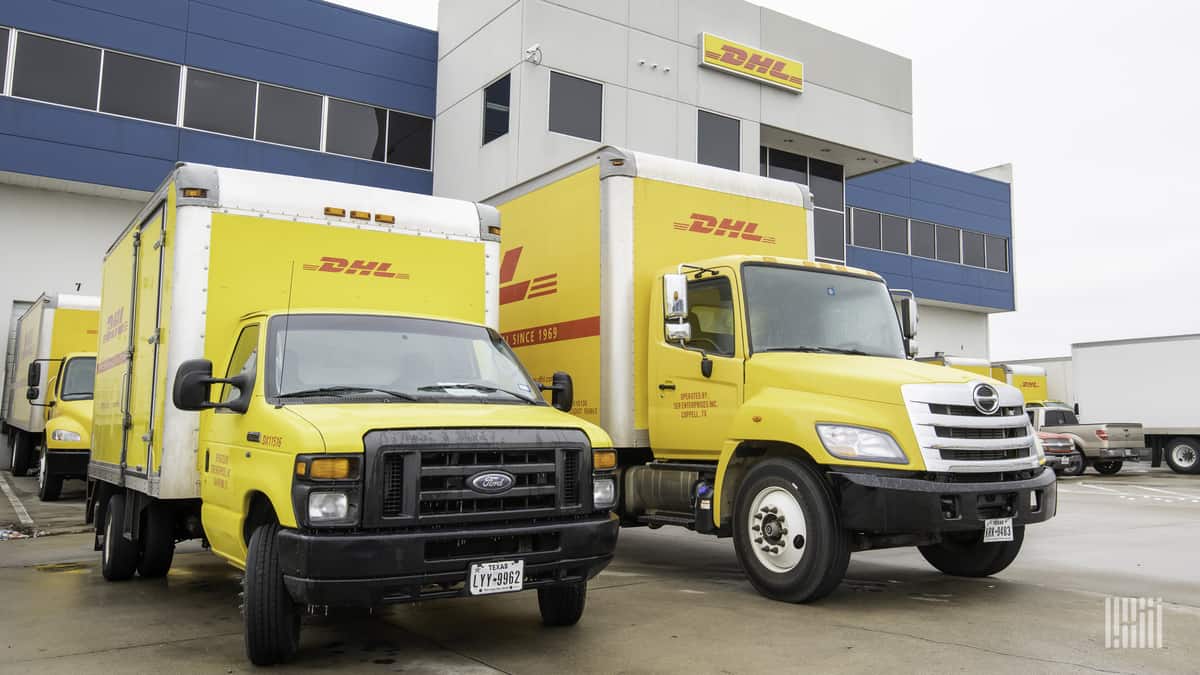Deutsche Post DHL Group (OTCMKTS: DPSGY) is investing a whopping 7 billion euros ($8.25 billion) in green technologies between now and 2030 to fight climate change. As part of its sustainability road map released last week, the company also made a commitment to donate 1% of net profits to social impact projects and programs.
“We have a responsibility, being the 11th-largest private employer in the world,” to lead the way and take action on climate change, Scott Sureddin, CEO at DHL Supply Chain in North America, said in an interview with FreightWaves.
The environmental, social and governance (ESG) sustainability goals come from these three categories:
- Environmental: clean operations for climate protection.
- Social: great company to work for.
- Governance: highly trusted company.
Which goals will be the hardest to achieve?
“It’s going to be aviation,” Sureddin said. The 2030 goal for aviation is to use 30% sustainable aviation fuel (SAF) across Deutsche Post DHL Group (DPDHL). He said that current technology allows jet fuel to be, at the most, 50% SAF. The company expects aircraft and SAF innovations to continue over the next 10 years.
According to DPDHL, 72% of scope 1 and 2 energy consumption was dedicated to its air fleet in 2020. The road fleet accounted for 17%, while buildings were responsible for 11% of energy consumption. Air transport was also the largest contributor to the company’s greenhouse gas (GHG) emissions by mode, responsible for 66% in 2020.
Another challenge, Sureddin said, will be electrifying the road fleet. DPDHL set a goal to electrify 60% of its last-mile delivery fleet by 2030, which will amount to 80,000 electric vehicles. Europe’s electric vehicle (EV) infrastructure is more advanced, but North America and parts of Asia have work to do in terms of EV infrastructure, Sureddin said.
Sureddin said that it’s much easier to find electric last-mile delivery vans and vehicles than it is to get electric line-haul trucks. He noted that, after placing orders more than five years ago, he is still waiting on delivery for electric tractor trailers from Tesla and other manufacturers. The company will strive for 30% of its line-haul vehicles to be electric by 2030, which is likely to be difficult due to more extensive infrastructure and battery technology challenges.
These environmental goals are part of DPDHL’s target to reduce GHG emissions from 33 MT in 2020 to less than 29 MT by 2030, and this includes global logistics growth the company expects to see in the next nine years.
DPDHL has not disclosed where the 7 billion euros will go. However, Sureddin said the majority will likely be dedicated to aviation and delivery vehicles because of how large the goals are in those areas. Investments in green buildings will follow closely behind. He said that DHL Supply Chain’s 140 million-plus square feet of building space in North America already has minimum efficiency standards with LED lighting and HV/AC systems. It is also installing rainwater catchment systems and solar panels at some of the newer buildings.
The social side
Safety is a front-runner in DPDHL’s social responsibility pillar. “When you come to work today, we expect you to go home the way you showed up,” Sureddin said.
The company is aiming to reduce its lost time injury frequency rate to below 3.1 hours per 200,000 hours worked by 2025. That number stood at 3.9 in 2020. Along with high safety standards, the company wants to attract the best talent.
“We want diversity of thought and diversity of talent,” Sureddin said. He said that companies need ambitious ESG goals to bring in the most talented workers and to be seen as a good investment.
To increase the number of women in upper and middle management, DHL Supply Chain is building a pipeline. Where does the pipeline begin? College campuses.
Sureddin said DHL Supply Chain recruits about 500 interns and entry-level managers from colleges across North America each year. It has a goal for 40% of those hires to be women. The company is involving women in logistics at even younger ages as well, including in its partnership with Girl Scouts of America to educate girls on supply chains.
Sureddin said that diversity and inclusion of all people is part of DPDHL’s core values, and it is educating employees about things like, “How do you realize and remove unconscious bias?” and “Why is diversity important?”
Getting suppliers involved
“We want to be a highly trusted company. Trust is something that you have to work for, something that you have to protect and preserve,” Melanie Kreis, chief financial officer at DPDHL, said during a webcast. For DPDHL, that means making sure that its suppliers are on the same page with its goals.
All of the company’s current suppliers have to adhere to its code of conduct. Now DPDHL is taking that a step further to ensure that suppliers understand and comply with the company’s ESG goals. Because it is setting lofty environmental goals, it makes sense that DPDHL wants to include every step of its value chain, including suppliers.
“When you’re moving, others have to move with you if they want to stay in business,” Sureddin said.
Click here for more FreightWaves articles by Alyssa Sporrer.
Related Stories:
Latest corporate climate progress: Plenty of work still remains
Sustainability Q&A with DHL Supply Chain experts
Flock Freight to offset 100% of FlockDirect carbon emissions











Ziane
the article is really very helpfu
Ziane
l.
Really graet. Thank you